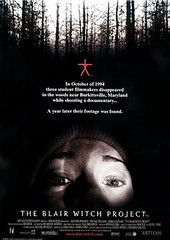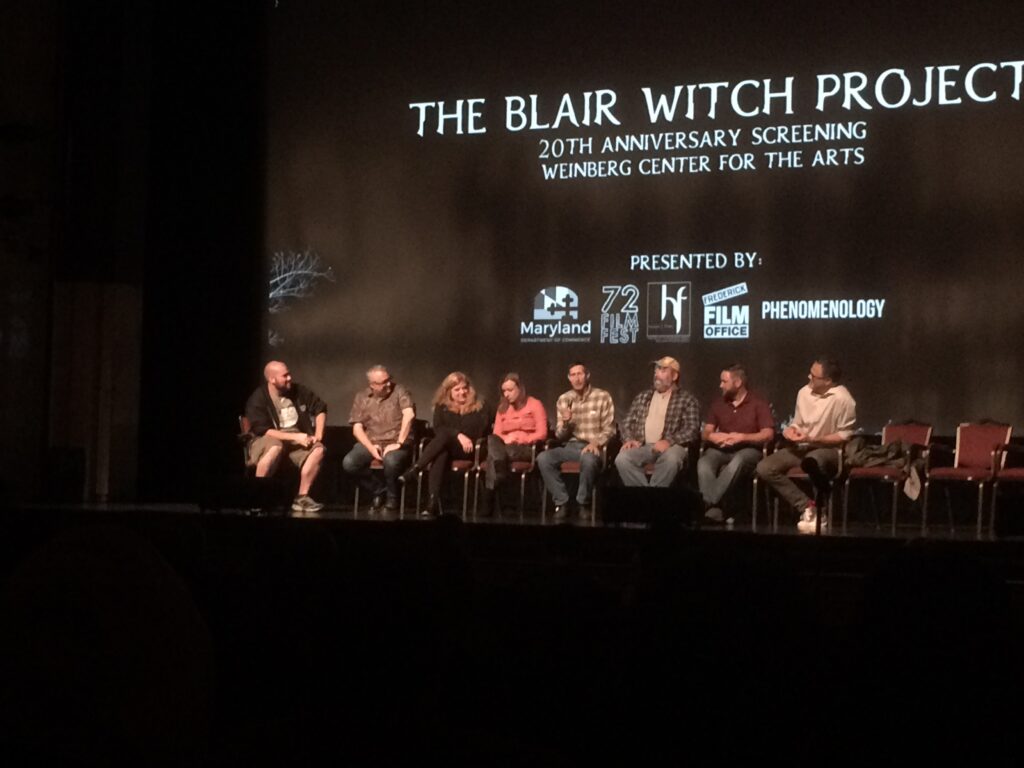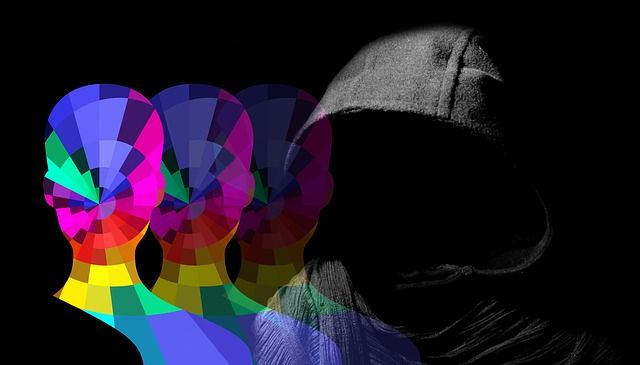
In the annals of cinematic and marketing history, few phenomena resonate with the enduring strategic brilliance of “The Blair Witch Project.” Released in the summer of 1999, this independent horror film transcended its modest $60,000 budget to achieve a worldwide box office total of $248.6 million, a staggering 4,000 times its original investment. More than just a financial triumph, it fundamentally reshaped perceptions of the horror genre and marketing itself, establishing a blueprint for engagement that remains studied and admired a quarter-century later. Its success was not merely fortuitous; it was the meticulous culmination of an unprecedented, internet-centric marketing campaign designed to blur the lines between fiction and reality.
The context of 1999 is crucial to understanding this achievement. The internet, while rapidly gaining accessibility, was a nascent frontier. Most users encountered it at work, school, or libraries, and home access was often tethered to dial-up connections. Information overload was not yet a societal norm, and the ease of instantaneous fact-checking that we now take for granted simply did not exist. This unique digital landscape provided fertile ground for an ambitious project that dared to leverage new mediums to cultivate a communal belief in its fabricated narrative, echoing Orson Welles’ “The War of the Worlds” for a new digital age.
This article delves into the foundational marketing strategies that propelled “The Blair Witch Project” from a low-budget indie film into a cultural touchstone. We will analyze how the project’s masterminds harnessed strategic foresight, novel digital mediums, expansive timelines, and comprehensive narrative coverage to craft an immersive experience that convinced audiences of its horrifying authenticity. These insights offer invaluable lessons for contemporary strategists seeking to create impactful, resonant campaigns in an increasingly saturated information environment.
1. Plan, Plan, Plan: The Blueprint for Belief
The genesis of “The Blair Witch Project’s” profound impact can be traced directly to an unparalleled level of strategic planning that began years before the film’s release. Daniel Myrick and Eduardo Sánchez initiated the project in 1993, well before the cameras even rolled. This foresight allowed for the development of a comprehensive 35-page outline, the establishment of Haxan Films with three friends, and a meticulous casting process that sought actors who could embody the raw, unscripted essence of their roles. Their overarching goal was clear and unwavering: to “make people believe.”
This commitment to detailed pre-production extended beyond a mere script; it encompassed the creation of a rich, fictional mythology and intricate backstories that would lend credibility to the supernatural elements. The Blair Witch legend, centered around Elly Kedward, a Blair resident accused of witchcraft in 1785, was painstakingly crafted. This detailed lore, complete with a timeline of Burkittsville tragedies attributed to the witch, provided a robust narrative scaffolding upon which all subsequent marketing efforts would be built. The directors even went so far as to create and distribute materials like “expert interviews” and a book titled “The Blair Witch Cult” to further embed this fabricated history into the cultural consciousness.
When filming commenced in 1997, Myrick and Sánchez were not just directing a movie; they were orchestrating a belief system. This foundational planning, far from being a mere logistical exercise, was a strategic imperative that empowered the entire project to operate with a singular, unwavering vision, allowing for an organic, reactive performance from the cast while maintaining strict narrative control from the creators. It was this detailed blueprint that allowed for the “unseen” elements of the horror to feel truly terrifying, as Stephen King himself attested: “When the lead characters start discovering strange Lovecraftian symbols hanging from the trees, I asked my son to turn the damn thing off. It may be the only time in my life when I quit a horror movie in the middle because I was too scared to go on.”
This strategic depth exemplifies the principle that thorough preparation is not merely about execution, but about laying the groundwork for an immersive, believable experience. It highlights that even in independent filmmaking, or indeed any creative endeavor, a clear, well-defined vision, backed by extensive planning, is paramount for achieving resonance and cutting through the noise. The success was not accidental; it was painstakingly engineered from the ground up, ensuring every piece of the puzzle, real or fabricated, fit perfectly into the larger tapestry of belief.

2. Explore and Utilize New Mediums: The Internet as a Credibility Engine
“The Blair Witch Project” stands as a pioneering case study in leveraging novel communication channels to achieve unprecedented marketing objectives. In an era where “virality” was still a term primarily associated with infectious diseases, the filmmakers and Artisan Entertainment astutely recognized the internet’s burgeoning potential as a marketing tool. They transformed “this ‘new fad’ called ‘the internet'” into a powerful engine for disseminating information, fostering community, and most crucially, cultivating belief in the film’s supposed authenticity.
The strategic deployment of the internet was twofold: it offered a low-cost distribution channel and, critically, it was immature enough to bypass the rigorous fact-checking mechanisms prevalent today. As the context notes, “the internet wasn’t developed enough to dig deeper and poke holes, but it was developed enough to spread the story in message boards and chat rooms.” This sweet spot enabled the rapid, widespread distribution of the “true story” narrative without immediate scrutiny, a unique temporal advantage. Artisan’s head of marketing, John Hegeman, a true believer in the internet’s potential, understood that “There are a lot of other ways to get to people other than throwing money at them,” demonstrating a prescient understanding of digital word-of-mouth.
At the core of this digital strategy was the blairwitch.com website, launched by Haxan Films in June 1998, months before the film’s Sundance premiere. This website was far more than a conventional movie promotional site; it was designed as a comprehensive repository of “evidence” reinforcing the narrative of missing students and a genuine local legend. It hosted fictional police reports, newspaper articles, journals, interviews, crime scene photos, and even real childhood photos of the actors, cleverly integrating fabricated details with elements of reality. This digital hub became the central nervous system of the campaign, drawing an impressive 100,000 views even before the film was seen.
The website was dynamically updated, particularly after Artisan Entertainment acquired distribution rights and relaunched it on April Fool’s Day. By August 1999, it had racked up 160 million hits, an astronomical figure for the time. This online presence was further amplified by strategically placed forum posts from individuals close to the film, subtly trickling information and linking back to the website under the guise of seeking information. This organic seeding of content within online communities not only generated buzz but solidified the narrative’s authenticity by presenting it as discovered, rather than marketed, information, masterfully leveraging the nascent social web to achieve unparalleled engagement.

3. Make Sure You Have Enough Time: The Power of Prolonged Narrative Incubation
A critical, yet often overlooked, component of “The Blair Witch Project’s” success was the extended timeline of its marketing efforts. The campaign was not a last-minute scramble but a meticulously orchestrated, multi-year endeavor designed for “prolonged narrative incubation.” Marketing efforts began almost two full years before the movie’s nationwide release, allowing ample time for the lore to permeate public consciousness, build credibility, and generate organic curiosity. This extended lead time prevented the campaign from being perceived as a fleeting promotional stunt; instead, it became a slow-burn mystery unfolding in real-time.
This prolonged pre-launch phase was instrumental in cultivating what the creators termed “passive curiosity.” For instance, raw footage (pre-movie) was aired alongside an interview with the directors on John Pierson’s Split Screen in August 1997, two years before the film’s release. Split Screen revisited the project in April 1998, showing actual film footage. Such early disclosures were not designed for immediate box office returns but to plant seeds of intrigue. They allowed audiences to encounter the “story” through various indirect channels — perhaps channel-flipping and catching a segment, or stumbling upon forum discussions — thereby lending an an air of organic discovery rather than overt marketing.
The crescendo of this long-form strategy arrived with the broadcast of the fake documentary, “The Curse of the Blair Witch,” on the Sci-Fi Channel just over two weeks before the film’s theatrical debut. This “documentary,” presented as real, contained manufactured reports, articles, newsreels, and interviews. Its timing was impeccable: late enough to create a sense of urgency and direct anticipation for the film, but early enough that it had been seen by enough people to spark conversation and deepen the illusion of reality before the theatrical release. This layering of “evidence” over an extended period was key to embedding the narrative into the public psyche.
Had these extensive materials and disclosures emerged only weeks before the release, their impact would have been significantly diminished. Such a condensed timeline would have risked immediate skepticism, allowing less time for the “is it real or not?” debate to genuinely take hold and for the digital word-of-mouth to organically amplify. The foresight to dedicate an extended period to building the mythology and disseminating “evidence” allowed the story to breathe, to be absorbed and debated, ultimately creating a robust foundation of public belief and fervent anticipation that paid dividends at the box office.

4. Cover All Your Bases: Crafting a Seamless Fabric of Fictional Reality
The genius of “The Blair Witch Project’s” marketing lay in its unparalleled commitment to covering every conceivable base, creating a seamless and exhaustive fabric of fictional reality. The creators anticipated how a real missing persons case or a deeply entrenched local legend would manifest in the public sphere and meticulously replicated every detail. This involved generating a vast array of “created materials” designed to mirror authentic documentation, leaving no logical gaps for audiences to easily exploit.
Consider the sheer volume and diversity of these fabricated assets: realistic missing posters, newsreels, news interviews, newspaper clippings, police reports, photos from the search, recorded interviews, and even crime scene photos. These were not just standalone items; they were designed to interlink, forming a cohesive and convincing narrative. For instance, the context details “character connections that came together to paint an even more realistic story—such as Mrs. Donahue’s exasperation and anger with the local police, leading her to search for anyone who can help her piece together what happened.” This attention to humanizing details and motivations made the narrative deeply relatable and emotionally compelling, transcending a mere collection of documents.
Crucially, the creators even accounted for the seemingly mundane, yet vital, aspects of maintaining the illusion. The website housed “information on the Blair Witch herself, newsreels, photos of Heather’s journal, and real childhood photos of the actors,” further blurring the lines between the fictional characters and the real individuals. This comprehensive approach ensured that if an inquiring mind sought to “dig deeper,” they would only uncover more layers of the fabricated reality, rather than expose its fictional underpinnings. The narrative was so robust that it even prompted real police departments to receive calls from individuals attempting to assist in the “search” for the missing students, and Heather’s mom reportedly received sympathy cards.
This strategy of “covering all your bases” is a testament to the idea that true immersion requires anticipating and addressing all potential points of inquiry or skepticism. By building a complete and self-referential world of evidence, the filmmakers didn’t just market a movie; they presented a compelling case, making it incredibly difficult for audiences in 1999 to dismiss it as pure fiction. This holistic approach transformed marketing into a form of interactive storytelling, making the audience an unwitting participant in a grand, cinematic illusion.
Having explored the meticulous foundational planning and groundbreaking deployment of digital mediums that set the stage for “The Blair Witch Project’s” triumph, we now shift our focus to the equally critical execution and broader impact of its marketing genius. The film’s enduring resonance and commercial success were not solely the result of its intricate backstory or its online presence; they were deeply rooted in a strategic return to fundamental human fears, the cultivation of a vibrant, engaged community, an unwavering commitment to authenticity, and the innovative deployment of a digital hub that served as the central nervous system for its narrative illusion. These elements collectively forged a campaign that transcended traditional promotion, turning a low-budget film into a cultural phenomenon.

5. Take It Back to Square One: The Power of Primal Fears
One of the most profound lessons from “The Blair Witch Project’s” marketing playbook is the effectiveness of stripping away complexity and tapping into universal, primal fears. In an era where digital special effects were rapidly advancing, offering filmmakers the ability to render almost anything imaginable on screen, Myrick and Sánchez deliberately chose a minimalist approach. Their film eschewed masked villains, CGI monsters, explicit gore, or heroic climaxes, opting instead for a raw, visceral experience that resonated on a far more fundamental level with its audience. This intentional restraint was a powerful marketing tool in itself, positioning the film as something starkly different from the prevailing horror landscape.
Indeed, as film critic Roger Ebert astutely observed, “At a time when digital techniques can show us almost anything, The Blair Witch Project is a reminder that what really scares us is the stuff we can’t see. The noise in the dark is almost always scarier than what makes the noise in the dark.” This sentiment perfectly encapsulates the film’s ability to conjure terror not through visual spectacle, but through implication and the audience’s own imagination. The marketing implicitly promised a horror that was psychological, a dread born of disorientation and the unknown, appealing to an almost-universal nostalgia of a scary witch legend and the inherent fear of being lost and alone in the woods.
The film’s raw, unpolished aesthetic and its deliberate lack of conventional scares allowed it to sidestep the trappings of typical horror, which often relied on escalating shock value. Instead, it delivered an experience of pure dread and realism, a gradual descent into paranoia where the unsettling sound of rustling leaves or the appearance of an unfamiliar symbol was far more terrifying than any CGI beast. This back-to-basics approach was revolutionary, demonstrating that immense impact could be achieved not by adding more “bells and whistles,” but by amplifying the inherent tension in a simple, deeply unsettling premise. The film’s success became a testament to the idea that sometimes, the most sophisticated marketing isn’t about promoting an elaborate product, but about effectively conveying an experience that connects with deeply ingrained human anxieties.
This strategic simplification extended beyond the film’s content to its core marketing message. The messaging didn’t oversell complex plot points or star power; instead, it focused on the authenticity of the “found footage” and the visceral fear of being truly lost. This stark, unadorned narrative resonated deeply with audiences precisely because it felt real, bypassing the critical filters often applied to more overtly “produced” horror films. The campaign effectively communicated that this wasn’t just another movie; it was an unearthed artifact of genuine terror, an invitation to confront fears rooted in the primitive unknown, making it distinct and impactful in a way many modern films struggle to achieve.
Read more about: The Untamed Spirit: 14 Actors Who Forged the Soul of ’70s and ’80s Action Cinema

6. Build a Community: Fostering Digital Engagement and Organic Amplification
A cornerstone of “The Blair Witch Project’s” marketing strategy was its unparalleled ability to identify and cultivate a dedicated online community, transforming passive viewers into active participants and zealous advocates. In the internet’s early days, forums and chat rooms served as critical digital town squares, and the filmmakers, along with Artisan Entertainment, masterfully leveraged these nascent social spaces to build buzz and embed their fabricated narrative into public discourse. This wasn’t merely about disseminating information; it was about fostering an environment where the “truth” of the Blair Witch legend could organically grow and spread.
The strategy involved “those close to the film” strategically engaging in various forums, not as marketers, but as concerned individuals or seekers of information. They would subtly “trickle information,” often posing as members of the public seeking details about the missing students or linking back to the blairwitch.com website under the guise of finding resources. This organic seeding of content bypassed traditional advertising, making the narrative feel discovered rather than overtly promoted. It inspired curious internet users to delve deeper, debate the “evidence,” and, crucially, spread the word to their own networks, transforming the audience into an unwitting marketing force.
The community-building extended beyond the digital realm, bleeding into real-world phenomena that further solidified the narrative’s authenticity. The campaign’s success led to tangible, almost unbelievable outcomes, such as reports of real police departments receiving calls from individuals attempting to assist in the “search” for the missing students. Even more poignantly, Heather Donahue’s real-life mother received sympathy cards, a powerful testament to how deeply the illusion penetrated public consciousness. These reactions underscore the profound impact of a marketing strategy that successfully built a belief system, not just a film following, inspiring a genuine communal response.
This vibrant, engaged community, fueled by curiosity and a genuine desire to uncover the “truth,” became the engine of the film’s unprecedented word-of-mouth success. By the time “The Blair Witch Project” premiered nationwide, anticipation had reached a fever pitch, with lines forming around the block at theaters. Audiences, often leaving the screenings terrified and disoriented, immediately flocked to the website to learn more, continuing the cycle of engagement and belief. This demonstrates that identifying your audience and focusing on creating materials that resonate deeply, inspiring them to spread the word, is an invaluable, timeless marketing principle.

7. Focus on Authenticity: The Unseen Art of Verisimilitude
At the heart of “The Blair Witch Project’s” monumental success was an unwavering commitment to authenticity, a strategic decision that convinced countless viewers that they were witnessing not a fictional film, but genuine found footage of a real-life horror. This focus on realism permeated every aspect of the project, from the initial planning stages to the on-screen performances, creating an experience that profoundly blurred the lines between storytelling and reality. The marketing, therefore, wasn’t just about promotion; it was about substantiating an illusion, making it indistinguishable from truth.
The film itself was a masterclass in this authentic presentation. The actors, playing characters who shared their real names (Heather Donahue, Joshua Leonard, Michael Williams), were largely left to improvise their dialogue and genuinely react to the harrowing conditions orchestrated by the filmmakers. They endured eight days in the woods, with minimal interaction from the crew, eating rations, and confronting planned scares designed to elicit genuine fear. This raw, unscripted reality translated directly to the screen, manifesting as visibly scared, tired, and hungry performances that viewers couldn’t easily dismiss as mere acting. The use of realistic equipment—RC HI-8 camcorders and a 16mm camera—further cemented the “documentary gone wrong” aesthetic, making the footage appear exactly like what might be recovered from a real crime scene.
Beyond the filming methodology, the marketing campaign meticulously amplified this sense of authenticity. From the outset, the “selling of the story” to investors involved presenting an eight-minute mini-documentary about the disappearance, complete with fabricated newspaper articles and news footage, compelling them to believe in the reality of the situation. Crucially, when the film debuted at the Sundance Film Festival, the actors were conspicuously absent from premieres, and all promotional materials listed them as either “missing” or “deceased.” The distribution of “missing posters” and pleas for information at events weren’t just stunts; they were integral parts of an overarching strategy to maintain the illusion of a genuine missing persons case.
The lasting impact of this relentless pursuit of authenticity cannot be overstated. Audiences genuinely believed that the tearful apology Heather whispered into the camera was the heartfelt confession of a person resigned to their tragic fate, and her hyperventilating whisper of “I’m gonna die out here” was tragically interpreted as the chilling last words of a young woman still missing. This level of immersion, this profound belief, was a direct consequence of the staggering amount of effort and dedication invested in making every single aspect of the film and its accompanying marketing feel undeniably real. It serves as a powerful reminder that in marketing, presenting real stories, real examples, and showcasing the humanity behind a product or service can forge an unparalleled connection with the audience.
8. Have a Cool Website: The Digital Hub as a Credibility Nexus
The blairwitch.com website was not merely a promotional page; it was the vibrant, dynamic digital heart of “The Blair Witch Project’s” entire marketing ecosystem, functioning as a “credibility nexus” that drew audiences deep into the fabricated reality. Launched by Haxan Films in June 1998, months before the film even premiered at Sundance, this website was a sophisticated hub designed to be a comprehensive repository of “information and materials dedicated to driving home the belief that the events surrounding the film were real.” It epitomized the “Digital Hub Strategy” mentioned in our outline, consolidating and legitimizing the sprawling narrative.
The website meticulously curated a vast array of fabricated assets, essentially acting as a digital dossier of the missing students’ case and the Blair Witch legend. Visitors could delve into “police reports, interviews, crime scene photos, newly-discovered footage, audio from their trip into the woods, information on the Blair Witch herself, newsreels, photos of Heather’s journal, and real childhood photos of the actors.” This sheer volume and diversity of “evidence” were critical; it provided depth and detail that prevented casual dismissal, making it incredibly difficult for the internet users of 1999 to discern the fiction from the truth. The integration of real childhood photos of the actors, for instance, blurred the lines between character and person, adding an unsettling layer of authenticity.
Artisan Entertainment recognized the website’s pivotal role, acquiring distribution rights and relaunching the site on April Fool’s Day, a date ironically chosen to further play with perceptions of reality. They continued to regularly update it in the run-up to the film’s theatrical release, ensuring that the mystery remained fresh and compelling. By August 1999, the site had accumulated an astonishing 160 million hits, an astronomical figure for the nascent internet, underscoring its unparalleled effectiveness as a low-cost, high-impact marketing channel that drew people in with exclusive, compelling information not found elsewhere.
In essence, blairwitch.com became the “War of the Worlds” for a new digital age. Just as Orson Welles’ radio broadcast leveraged a novel medium to create a communal belief in a fictional invasion, “The Blair Witch Project” harnessed the internet to cultivate a widespread conviction in its horrifying narrative. Even though the original site is no longer active, its legacy lives on through recreations, serving as an invaluable case study for any strategist looking to create an immersive digital experience. It demonstrates that a well-crafted, information-rich website can transcend mere promotion to become a vital, interactive component of storytelling, drawing and holding an audience’s attention through sheer depth and perceived exclusivity.
**The Enduring Echo of a Marketing Masterpiece**
Twenty-five years on, “The Blair Witch Project” remains an unparalleled case study in innovative marketing, a testament to how meticulous planning, audacious experimentation with new mediums, and an unwavering commitment to authenticity can yield extraordinary results. Its success was not a fluke but the culmination of a harmonized strategy where every component—from the detailed mythology to the immersive website and the raw realism of the film itself—worked in concert to create a genuinely terrifying and believable experience. It proved that in the realm of marketing, the biggest impact often comes from the most ingenious, rather than the most expensive, approaches.
The landscape of technology and audience engagement continues to evolve at breakneck speed, making a direct, one-to-one replication of “The Blair Witch Project’s” impact nearly impossible today. Yet, the core principles it so brilliantly demonstrated remain profoundly relevant. For leaders and strategists, the enduring lesson is clear: going “all in” and exploring new avenues, blending tried-and-true foundational elements with innovative methods, is a worthwhile endeavor. The film stands as a stellar example of how audacious vision, combined with strategic execution, can transcend budgetary constraints to create something that, even decades later, continues to inspire, challenge, and resonate with audiences worldwide. It truly redefined what was possible in marketing, leaving an indelible mark that encourages us all to think bigger, plan smarter, and above all, believe in the power of an authentically crafted narrative. So, if you’re ever looking to knock your next campaign out of the park, remember the legend of the Blair Witch – and the marketing genius that made it real. You might just find the inspiration you need.





